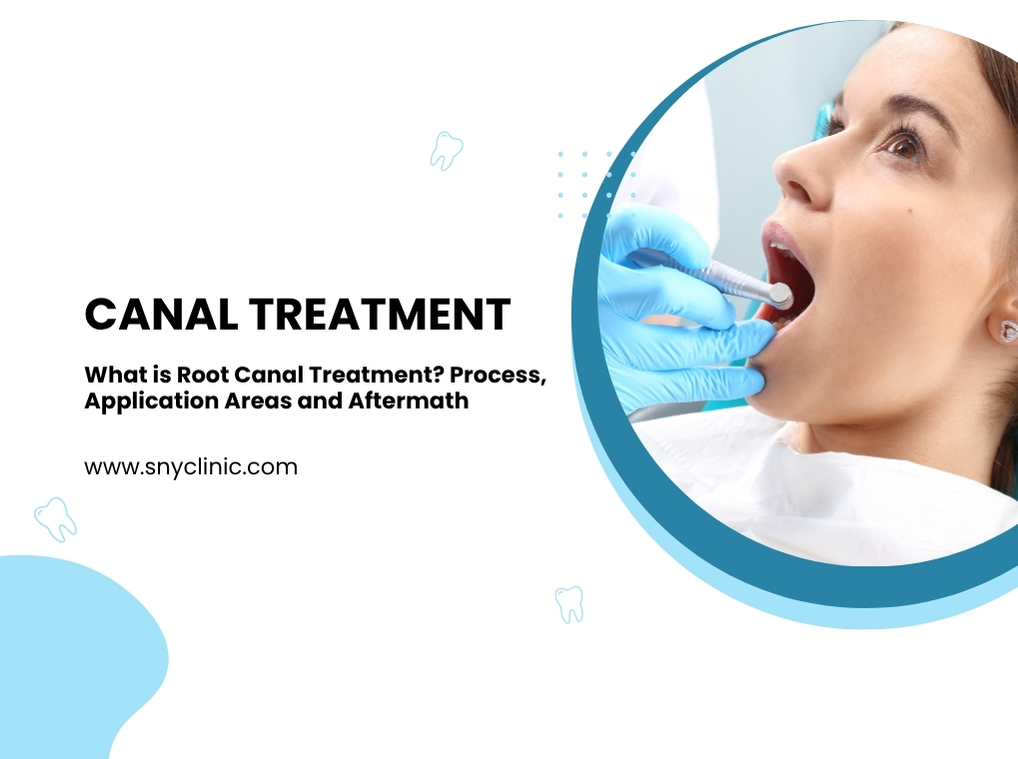
What is Root Canal Treatment? Procedure, Indications, and Aftercare
What is Root Canal Treatment?
Root canal treatment is a protective procedure used when the soft tissue (pulp) inside the tooth becomes inflamed, damaged, or loses its function. The infected or damaged tissue is removed, and the canal is disinfected and sealed with a durable filling material.
The main goal is to keep the natural tooth intact and functional without extraction, maintaining chewing ability, preserving aesthetics, and improving the patient's quality of life.
When Is Root Canal Treatment Necessary?
Root canal treatment is applied in cases where damage to the internal structure of the tooth cannot be reversed. It becomes necessary in situations such as:
- Deep decay reaching the pulp
- Trauma causing damage to the pulp tissue
- Cracks or fractures extending to the nerve
- Re-infection under previous fillings
- Persistent sensitivity to hot or cold accompanied by pain
- Signs of abscess, swelling, or infection around the tooth
If these signs are ignored, the tooth may be permanently lost. Early diagnosis and timely intervention are crucial for saving the tooth.
How Is Root Canal Treatment Performed? Step-by-Step Procedure
Root canal treatment is a delicate process to eliminate damage or infection in the inner tooth. It typically consists of several steps, performed under sterile conditions by experienced dentists.
1. Clinical Examination and Imaging
The dentist first listens to the patient's complaints and may use radiographic imaging (X-ray) to assess the tooth’s internal condition and the extent of any infection.
2. Local Anesthesia
The treatment area is numbed with local anesthesia to ensure a painless and comfortable procedure.
3. Creating Access to the Canal
A small access point is created on the chewing surface to reach the pulp and root canals.
4. Removal of Pulp Tissue
The inflamed or non-vital pulp is carefully removed using micro-instruments to stop the spread of infection and begin the healing process.
5. Shaping and Disinfecting the Canal
After pulp removal, the canal walls are gently shaped and repeatedly rinsed with antiseptic solutions to eliminate bacteria and debris.
6. Filling the Canal
The cleaned and dried canals are filled with a biocompatible material, usually gutta-percha, to prevent re-infection.
7. Restoring the Tooth (Filling or Crown)
The chewing surface is restored for function and aesthetics. A crown may be used if the tooth is weak.
How Long Does Root Canal Treatment Take?
The duration varies depending on several factors such as tooth location, number of canals, infection severity, and overall condition:
- Single-rooted front teeth: Usually completed in a single 30–60 minute session.
- Multi-rooted molars: May require 1–2 sessions; severe infections might need a break with antibiotics.
Modern dentistry allows most treatments to be completed in a single visit.
Is Pain After Root Canal Treatment Normal?
Some discomfort or sensitivity after the procedure is common and typically resolves within a few days. Key points include:
- Mild chewing sensitivity may occur and should be minimized in the first 24–48 hours.
- Painkillers may be used under your dentist's recommendation.
- Severe symptoms such as intense pain, swelling, or fever should be immediately reported to your dentist.
Post-Treatment Care Tips
Success depends not only on the procedure but also on post-treatment care. Key recommendations:
- Oral hygiene: Brush at least twice daily and use dental floss.
- Diet: Avoid very hot or cold foods initially, and limit sticky or sugary foods.
- Chewing habits: Don’t chew on the treated tooth until permanent restoration is complete.
- Regular check-ups: Don’t skip your dentist appointments to monitor the tooth long-term.
If done properly and cared for, a treated tooth can last for many years. Continued dental care and hygiene are essential.




